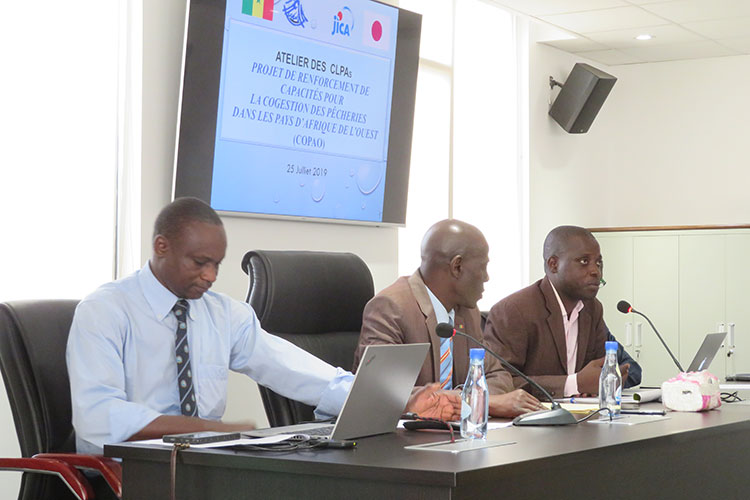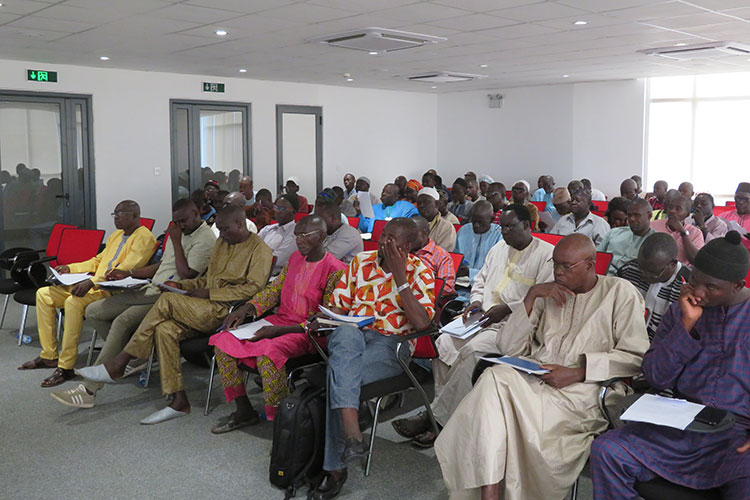2.1 Establishing and strengthening resource management organisations
Various organisations are involved in the management of fisheries resources, including the fisheries management committee set up voluntarily by the fishermen of Kayar, beach committees in the villages of the Saloum Delta initiated by the International Union for Conservation of Nature (IUCN), and Local Artisanal Fisheries Councils (CLPA), which have been promoted in Senegal in recent years. This section describes the process of establishing an organisation that represents the attributes, behaviours, and motivations of the population to implement fisheries resource management activities targeting coastal artisanal fisheries.
- Review the organisational structure of resource management
- Form or reorganise resource management organisations
- Strengthen the organisations through daily activities
Review the organisational structure of resource management.
Agencies and organisations promoting fisheries co-management, such as Fisheries Directorate extension officers, local government fisheries officers, donors, and fishermen and community leaders in the target area will determine whether existing organisations can undertake fisheries co-management and will consider the need for new organisations. If necessary, the consultation council[1] , established as a platform for coordinating interests among stakeholders, can play this role as part of coordinating interests.
In some cases, such as the Kayar fishermen of Grande-Côte, stakeholders have created self-organised groups. There were circumstances that led them to organise and allowed them to learn from the autonomy of activities.
5. Motivation of fishermen to organise on their own initiative
The direct motivation for the Kayar fishers of the Grande-Côte to voluntarily create a fisheries management committee was to unite and negotiate prices with fishmongers. The committee decided to impose their own catch limits, preventing fish prices from collapsing. These activities have ultimately promoted the sustainable use of resources.
3. CLPA, Organisation for the co-management of fisheries resources in Senegal
The ‘Comité Local de Pêche Artisanal’ (hereafter CLPAs), comprising administration representatives and artisanal fishers, were created as an organisation responsible for the co-management of fisheries resources. CLPAs are the decision-making body for the management of fisheries resources and were officially recognised in 2008, although their actual creation dates back several years. The role of CLPAs is to advise governmental institutions on fisheries issues, resolve conflicts, monitor fishing activities, propose fisheries resource management plans, and advise on artisanal fishing licenses.
There are two types of CLPA: CLPA Métier (profession) comprise trade groups called ‘colleges’ and CLPA Terroir (community) comprised numerous fishing villages. CLPA Métier (profession) are organised independently in large fishing villages, such as Joal, whereas CLPA Terroir (community) are formed in small and medium fishing villages, where a local village committee (CLV) is formed in each village and representatives from several CLVs come together to form a CLPA Terroir.
Form or reorganise a resource management organisation.
Agencies and their managers who intend to introduce co-management of fisheries resources, and in some cases, the consultation council mentioned above, bring together fisheries stakeholders and people from the target community. They explain and share with participants the challenges of fisheries resource management identified in Chapter 1 and the activities to overcome them. The purpose, needs, and role of resource management organisations are also explained. Based on this discussion, the formation or restructuring of the resource management organisation is discussed in a participatory manner. If necessary, a decision-making body and subordinate body are created to provide field supervision of the resource management activities to be developed.
6. Establishing a resource management organisation (CLPA) with the support of external actors
COGEPAS, implemented by JICA from 2009 to 2013, supported the establishment of new CLPAs in Lompoul and Djifer, two of the four targeted regions (Lompoul, Kayal, Joal, and Djifer) where no CLPAs had been established. Some established CLPAs with the support of external actors have continued to conduct fisheries resource management activities while others have stagnated.
7. Fisheries resource management decision-making and implementation groups
The COGEPAS project initiated by JICA has created resource management committees (such as the octopus resource management committee and the gillnet fishery management committee) within the CLPA, which is the decision-making body, to act as the implementing body for each resource management activity. The members of these committees shared the responsibility for taking the lead in specific resource management activities. This enabled the CLPA to function as the implementing body for activities. In the case of a village-size resource management committee, the committee could take the role of both the decision-making and implementing body.
Strengthen the organisations through daily activities.
Resource management organisations should discuss the issues and challenges identified in their day-to-day activities with the government and donors to seek solutions. In particular, they need to carefully coordinate the views of various social groups with different interests owing to differences in professions and other factors. If necessary, they should seek technical advice and legal support from the government and donors. Training to strengthen financial management capacity and requests for legal assistance are particularly important as problems can easily arise in the financial management of activities.
They should pay attention to the selection of realistic activities and the setting of objectives, and strive to strengthen a sense of solidarity within the organisation through the accumulation of small successes by each actor in fisheries resource management.


1. Refer to “1.2 Coordination of interests and consensus building among stakeholders” of this guideline (page 8)